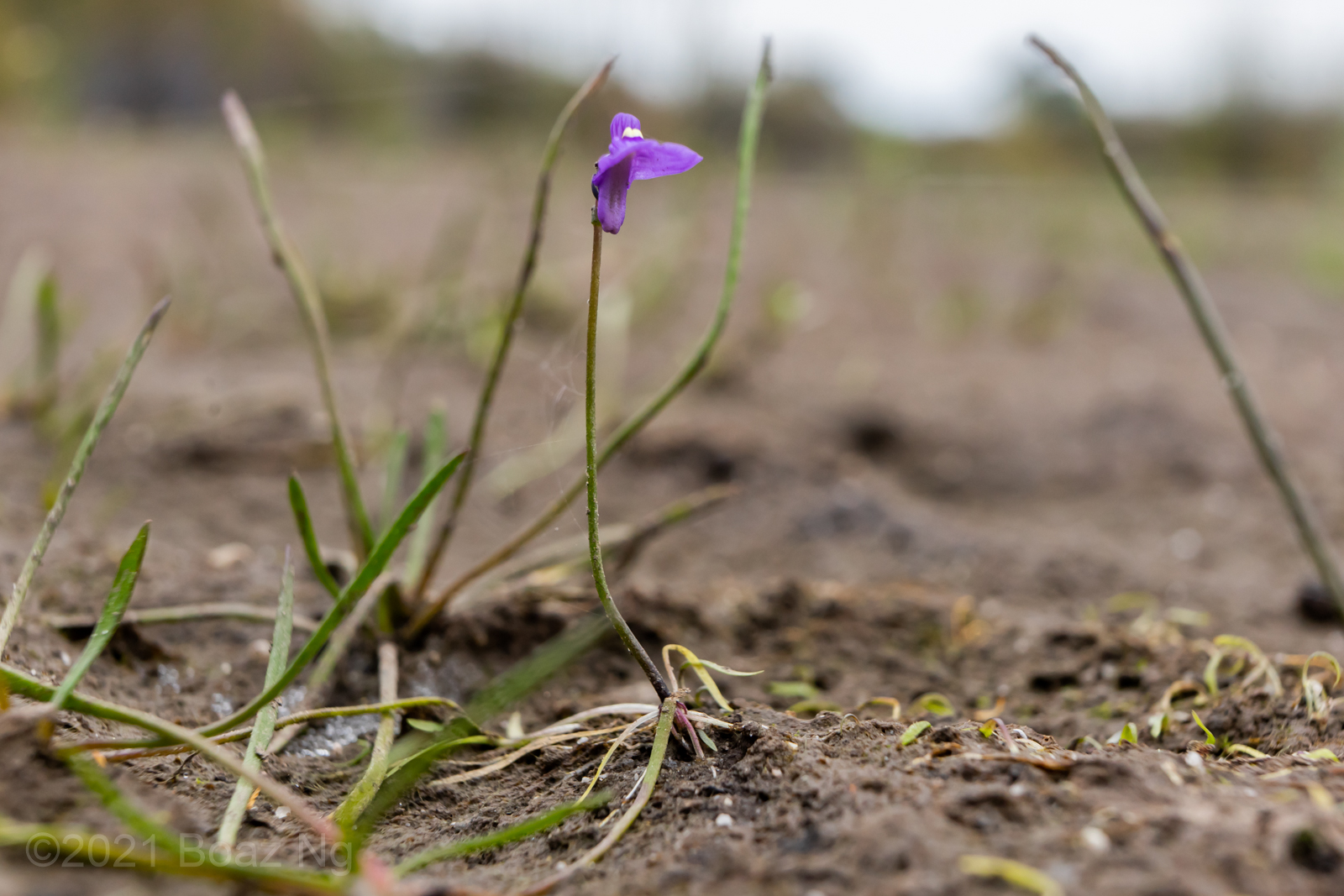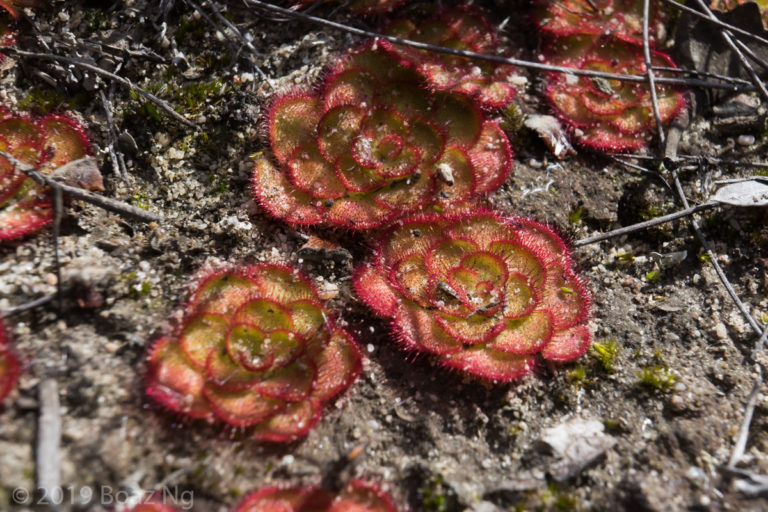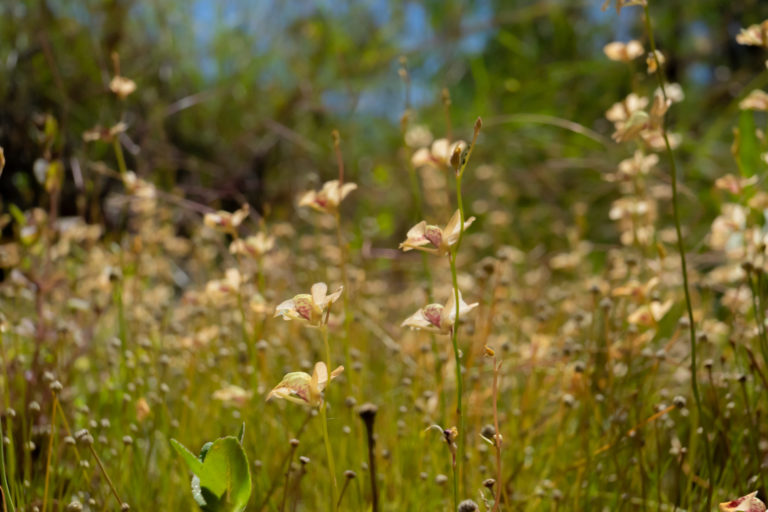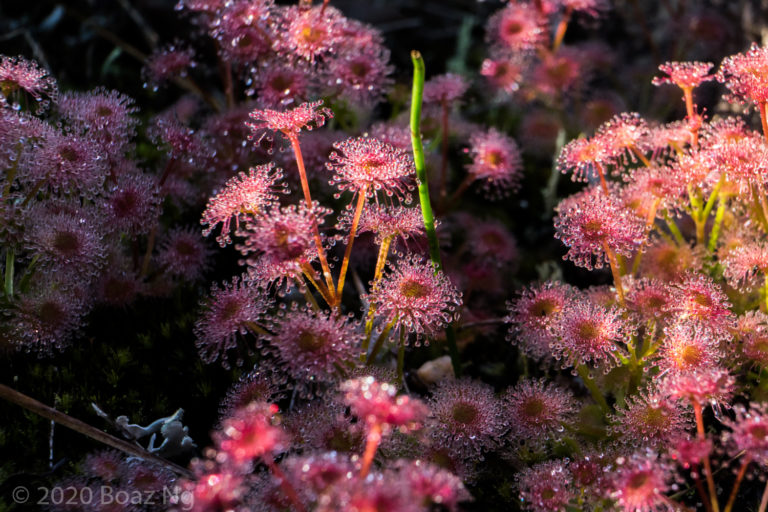Utricularia oppositiflora was originally described by Robert Brown in 1810 but was subsequently synonymised with U. dichotoma. A 2020 paper by Jobson & Baleeiro systematically analysed the genetics and morphology of the U. dichotoma complex and allied taxa and resurrected U. oppositiflora as a species in its own right.
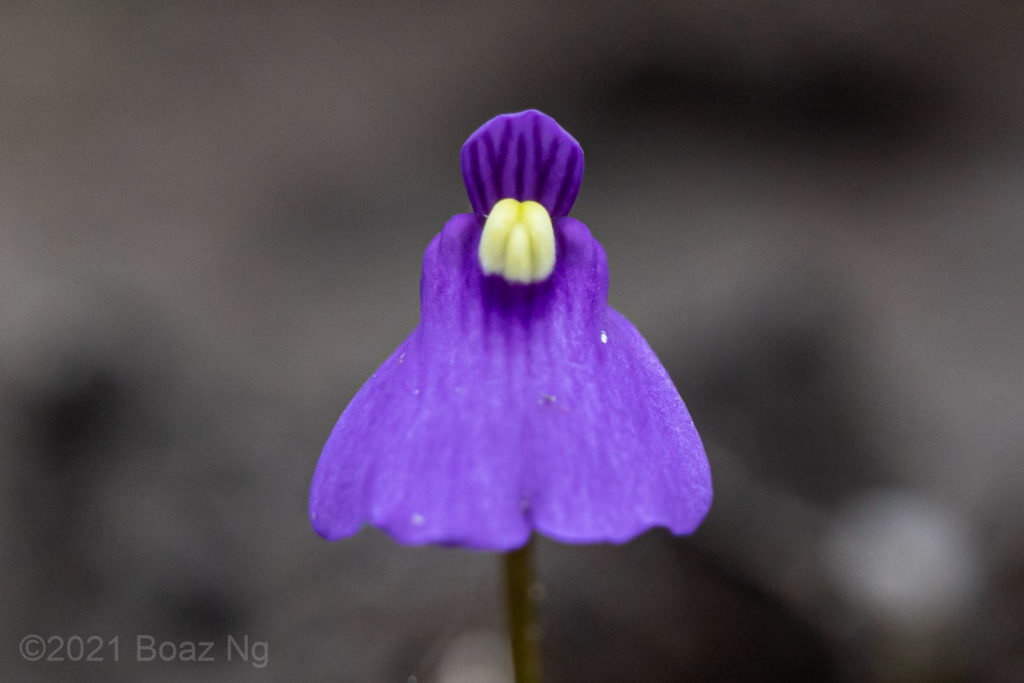
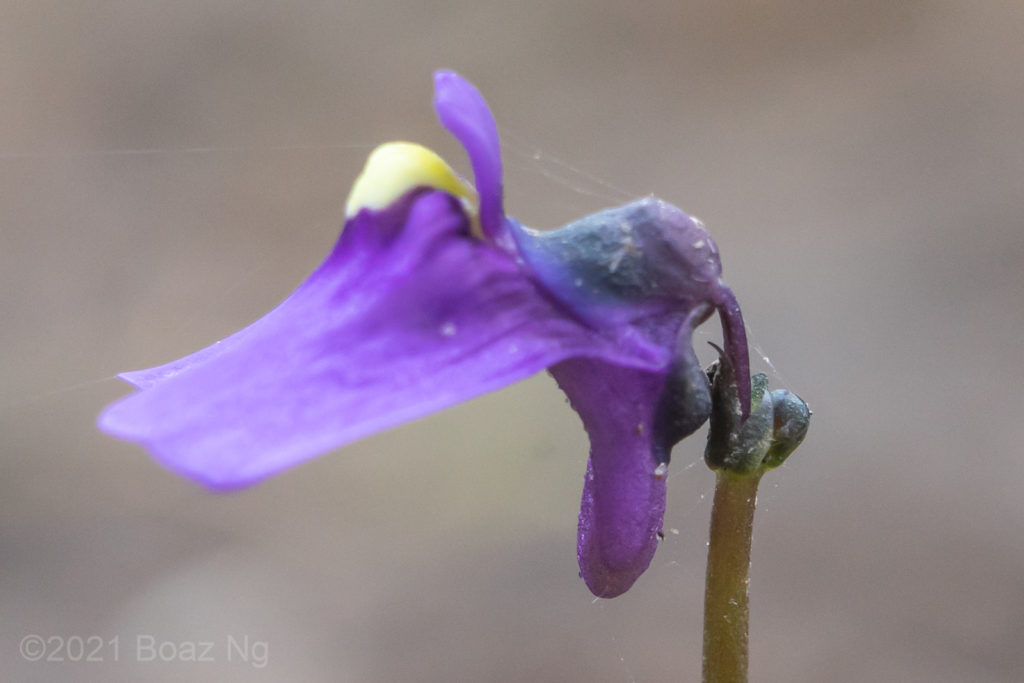
The upper corolla lip of U. oppositiflora is rounded, sometimes with notches at the top, and always features prominent dark purple veins. The lower corolla lip is generally flared downwards, with two or three yellow ridges in the middle. The corolla spur is broad, slightly arched forwards and is shorter or equal in length to the lower corolla lip. The bracts are basifixed (attached at the base) and non-gibbous (not swollen) at the base. The leaves of the species are long and thin. The size of the plant is variable and depends on environmental factors such as water availability.
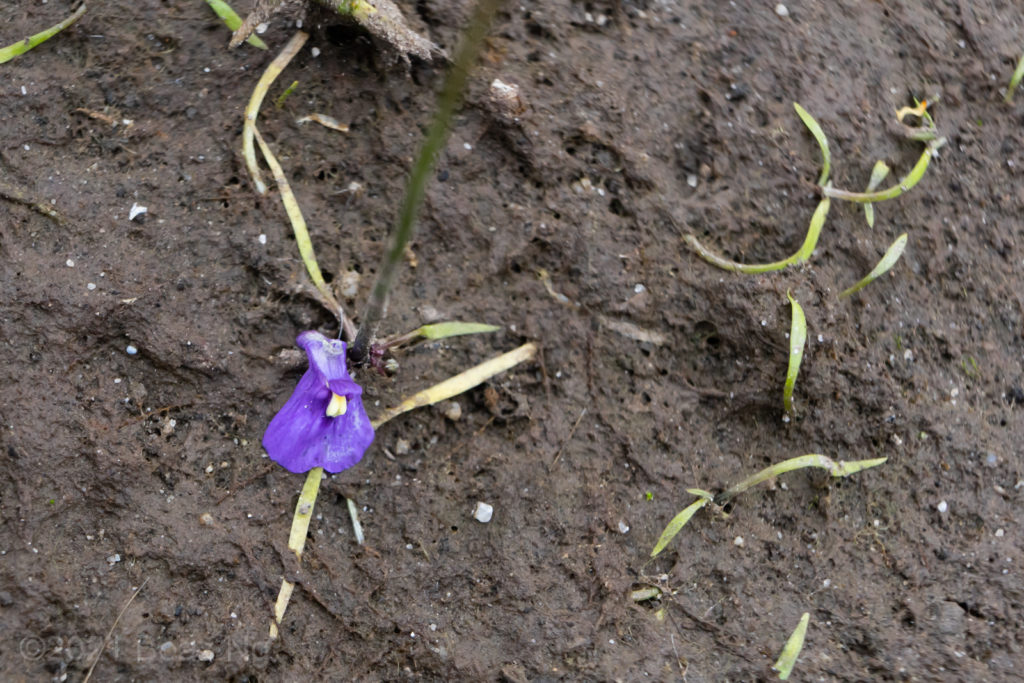
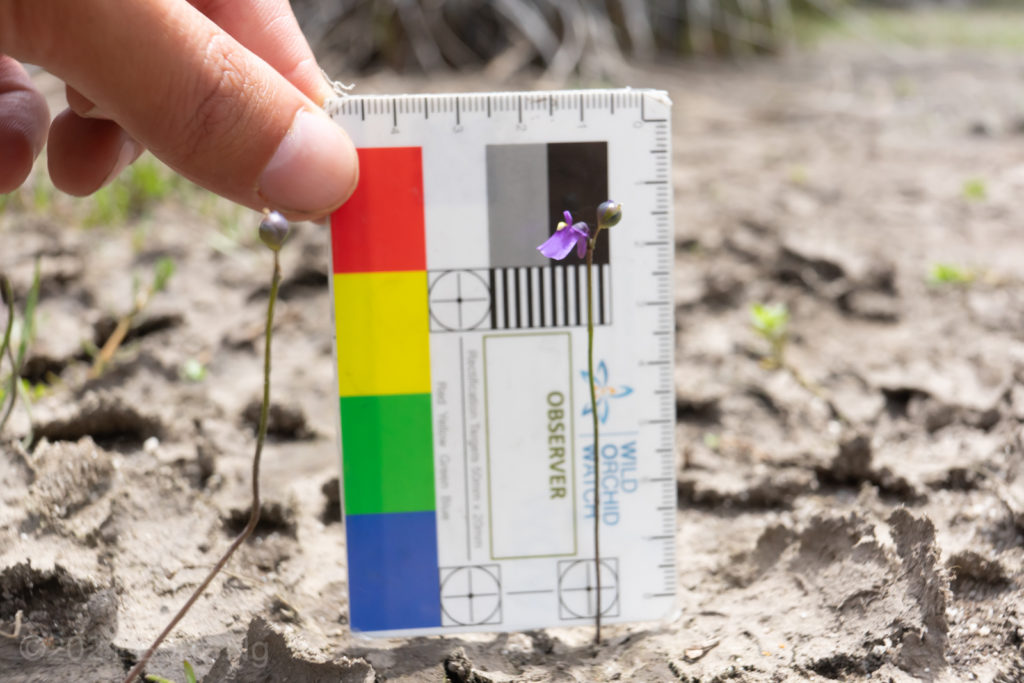
The species has a broad distribution across the southern half of Australia, where it grows in shallow seasonal swamps and depressions, and creek lines in heathland. I observed the plant flowering in late December, growing in receded sections of a shallow lake in the Gippsland region of Victoria.
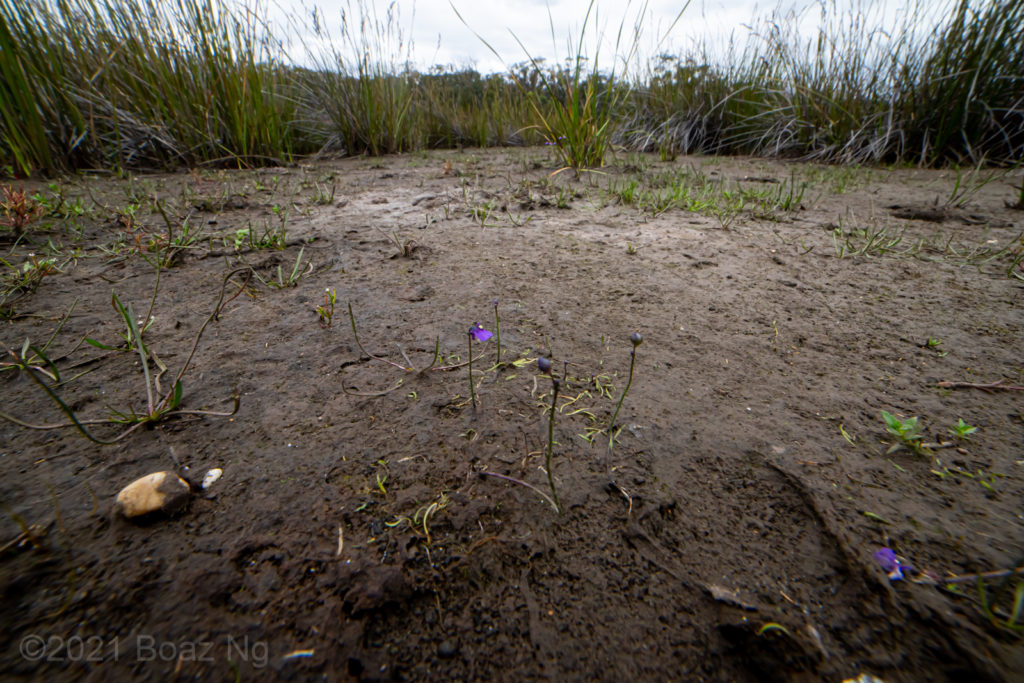
U. oppositiflora is easily distinguished from other purple flowered bladderworts by the combination of dark nerves on the upper corolla lip, long, thin leaves, and broad spur that is shorter or equal in length to the lower corolla lip.
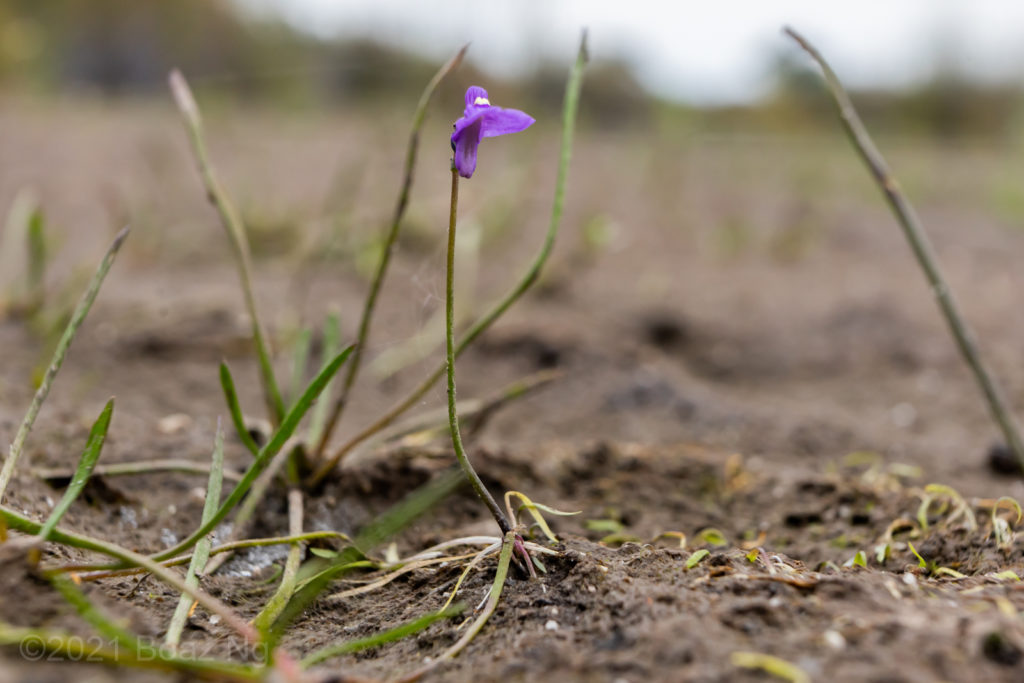
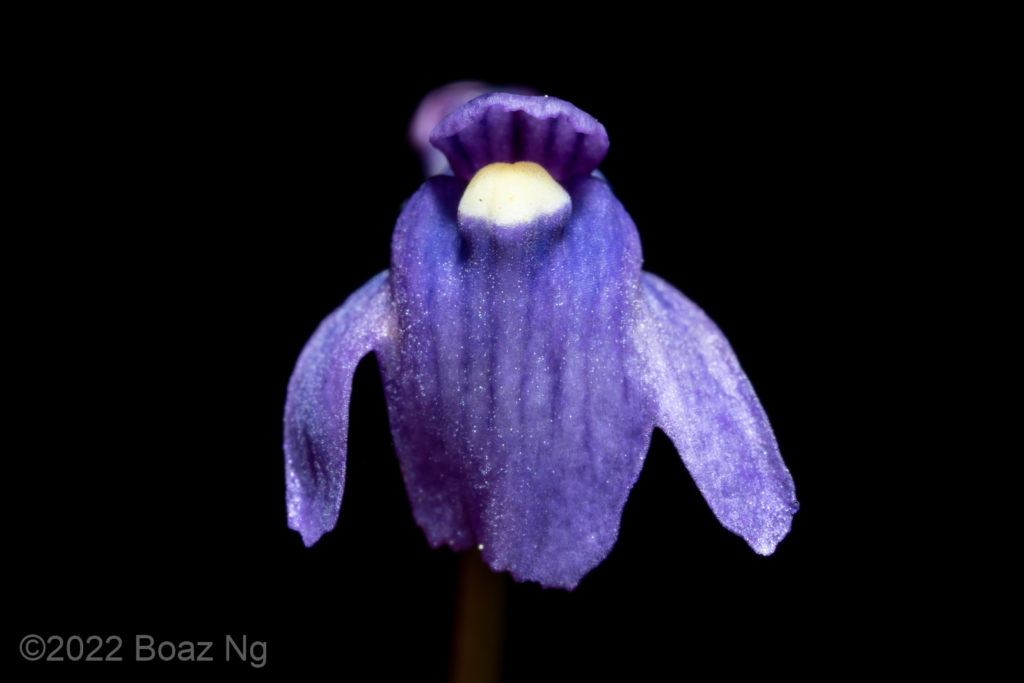
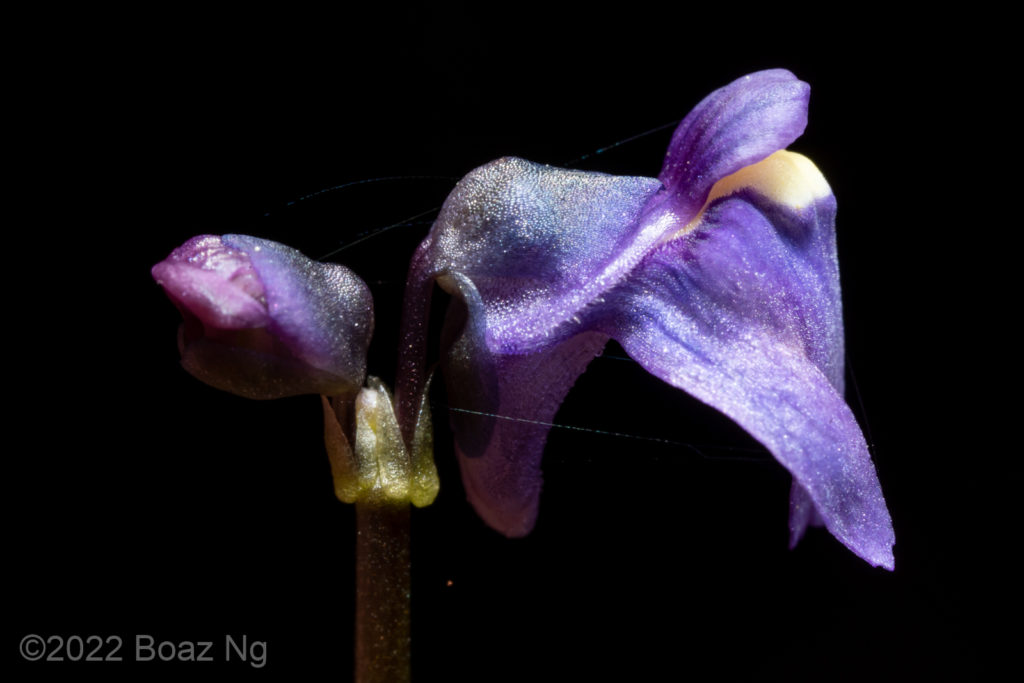
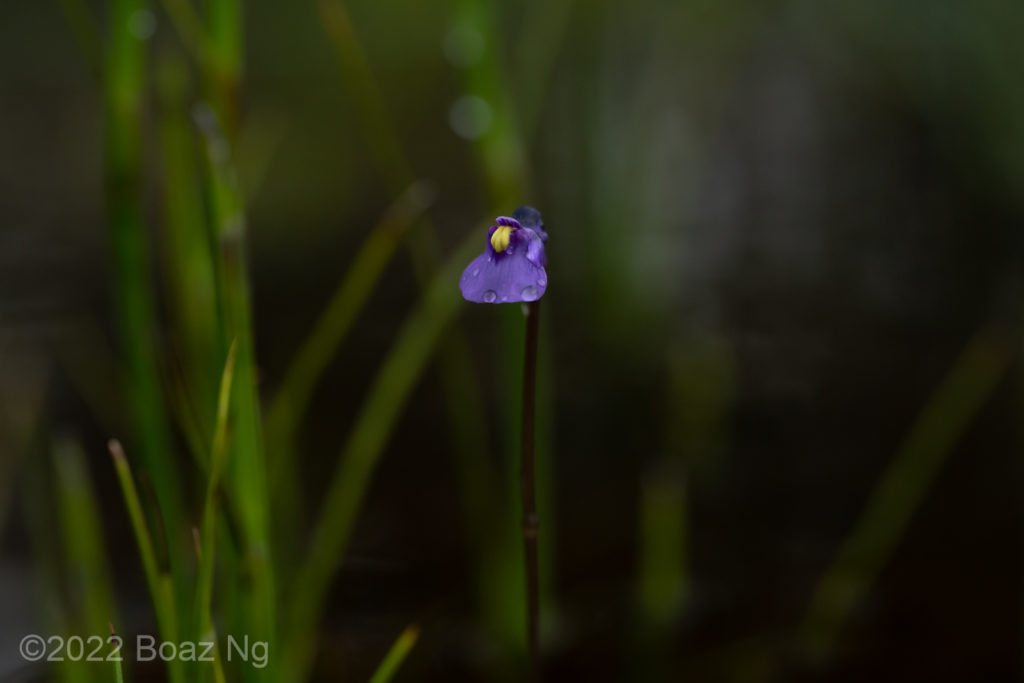
Reference:
Jobson and Baleeiro. 2020. Australian Systematic Botany, 2020, 33, 278–310

